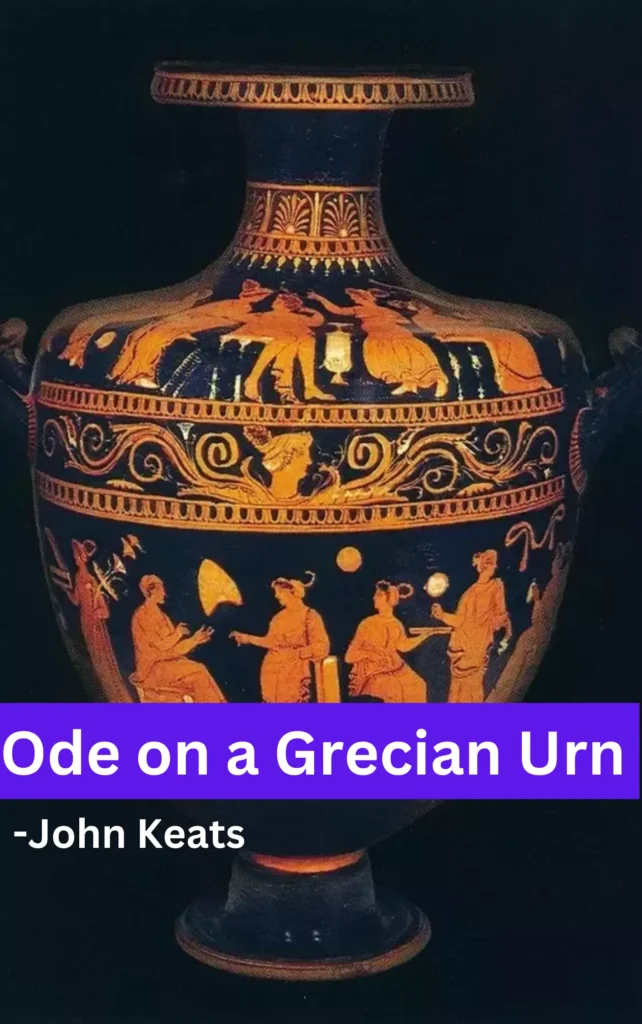About the Poem- Lady Lazarus
| Poem Title | Lady Lazarus |
| Author | Sylvia Plath |
| Publication date | 1963 |
| Genre | Confessional poetry |
| Form | Free verse |
| Themes | Suicide, death, resurrection, female identity, power, control |
| Symbols | Lazarus, the phoenix, the oven, the mirror, the womb |
| Imagery | Fire, water, blood, flesh, bones |
| Tone | Angry, defiant, triumphant |
Themes of Lady Lazarus
The themes of poem “Lady Lazarus” by Sylvia Plath are:
- Death and suicide ➤ The speaker of the poem has attempted suicide multiple times, and she compares herself to Lazarus, a biblical figure who was raised from the dead.
- Resurrection ➤ The speaker sees herself as a powerful and resilient woman who can control her own body and death. She defies death and asserts her own survival.
- Female identity ➤ The speaker explores the complex and often contradictory nature of female identity. She is both vulnerable and powerful, both victim and victor.
- Power and control ➤ The speaker takes control of her own story and her own body. She refuses to be defined by her suicide attempts, and she asserts her own power over death.
“Lady Lazarus” Poem by Sylvia Plath
I have done it again.
One year in every ten
I manage it
A sort of walking miracle, my skin
Bright as a Nazi lampshade,
My right foot
A paperweight,
My face a featureless, fine
Jew linen.
Peel off the napkin
O my enemy.
Do I terrify?
The nose, the eye pits, the full set of teeth?
The sour breath
Will vanish in a day.
Soon, soon the flesh
The grave cave ate will be
At home on me
And I a smiling woman.
I am only thirty.
And like the cat I have nine times to die.
This is Number Three.
What a trash
To annihilate each decade.
What a million filaments.
The peanut-crunching crowd
Shoves in to see
Them unwrap me hand and foot
The big strip tease.
Gentlemen, ladies
These are my hands
My knees.
I may be skin and bone,
Nevertheless, I am the same, identical woman.
The first time it happened I was ten.
It was an accident.
The second time I meant
To last it out and not come back at all.
I rocked shut
As a seashell.
They had to call and call
And pick the worms off me like sticky pearls.
Dying
Is an art, like everything else.
I do it exceptionally well.
I do it so it feels like hell.
I do it so it feels real.
I guess you could say I’ve a call.
It’s easy enough to do it in a cell.
It’s easy enough to do it and stay put.
It’s the theatrical
Comeback in broad day
To the same place, the same face, the same brute
Amused shout:
‘A miracle!’
That knocks me out.
There is a charge
For the eyeing of my scars, there is a charge
For the hearing of my heart
It really goes.
And there is a charge, a very large charge
For a word or a touch
Or a bit of blood
Or a piece of my hair or my clothes.
So, so, Herr Doktor.
So, Herr Enemy.
I am your opus,
I am your valuable,
The pure gold baby
That melts to a shriek.
I turn and burn.
Do not think I underestimate your great concern.
Ash, ash
You poke and stir.
Flesh, bone, there is nothing there
A cake of soap,
A wedding ring,
A gold filling.
Herr God, Herr Lucifer
Beware
Beware.
Out of the ash
I rise with my red hair
And I eat men like air.
Watch the summary of poem “Lady Lazarus” on YouTube
Lady Lazarus Summary & Analysis
Lady Lazarus is a powerful and disturbing poem by Sylvia Plath that explores the themes of death, rebirth, and the speaker’s complex relationship with her own body and mind. The poem is written in the first person, and the speaker is a woman who has attempted suicide multiple times. The title of the poem alludes to the biblical story of Lazarus, a man who was raised from the dead by Jesus Christ. However, in Lady Lazarus, the speaker’s resurrections are not joyous occasions. She is trapped in a cycle of death and rebirth, and she feels powerless to escape.
The poem begins with the speaker announcing that she has “done it again,” meaning that she has attempted suicide once again. She describes her body as being pale and lifeless, like a lampshade made from the skin of Jewish Holocaust victims. Her right foot is heavy as a paperweight, and her face is wrapped in a Jewish cloth, obscuring her features.
The speaker then calls out to her enemy, daring them to unwrap her face and see what they have done to her. She knows that her repeated suicide attempts have caused her loved ones pain, but she feels that she has no other choice. She is trapped in a living hell, and she sees death as her only way out.
The speaker then describes her experience of being resurrected after a suicide attempt. She feels like a phoenix rising from the ashes, but she is also aware that she is not the same person she was before. She is more cynical and jaded, and she has lost all faith in the world.
The speaker then compares herself to a Jewish bride, preparing for her wedding day. However, instead of wedding vows, she is reciting the names of the doctors and nurses who have saved her life over and over again. She is grateful to them for keeping her alive, but she is also resentful of the fact that they have trapped her in this cycle of death and rebirth.
In the final scene of the poem, the speaker addresses her enemy again. She tells them that she is not afraid of them, and that she will never give up. She is determined to survive, even if it means dying over and over again.
FAQs from Lady Lazarus
What is the meaning behind Lady Lazarus?
Lady Lazarus is a poem about a woman’s struggle with suicide and her desire to be seen and heard.
What is the feminist analysis of Lady Lazarus?
Lady Lazarus is a poem about female resilience in the face of oppression, and the speaker’s refusal to be defined by her pain.
What does Lady Lazarus think about life and death?
Lady Lazarus sees life and death as a cycle of suffering and rebirth.
What is the Holocaust in Lady Lazarus?
The Holocaust in Lady Lazarus is a metaphor for the speaker’s emotional pain and suffering.
What can we learn from Lady Lazarus?
Lady Lazarus teaches us that even in the darkest of times, there is hope for rebirth.
What does peel off the napkin mean?
Peel off the napkin means to reveal the speaker’s true self, even if it is disturbing or unpleasant.
What creature does Lady Lazarus compare herself to?
Lady Lazarus compares herself to a Phoenix, a mythical bird that rises from its own ashes.
What is the significance of number three in Lady Lazarus?
The number three in Lady Lazarus represents the speaker’s third suicide attempt.
Who is the enemy in Lady Lazarus?
The enemy in Lady Lazarus is the speaker’s own despair.
What is the miracle of raising Lazarus from the dead?
The miracle of raising Lazarus from the dead is a symbol of hope and resilience in the face of death.
What does grave cave ate mean?
Grave cave ate means that the speaker’s body was consumed by death, but she has returned to life.
Why is food left at the gravesites of loved ones?
To nourish the deceased’s spirit and show love and respect.











